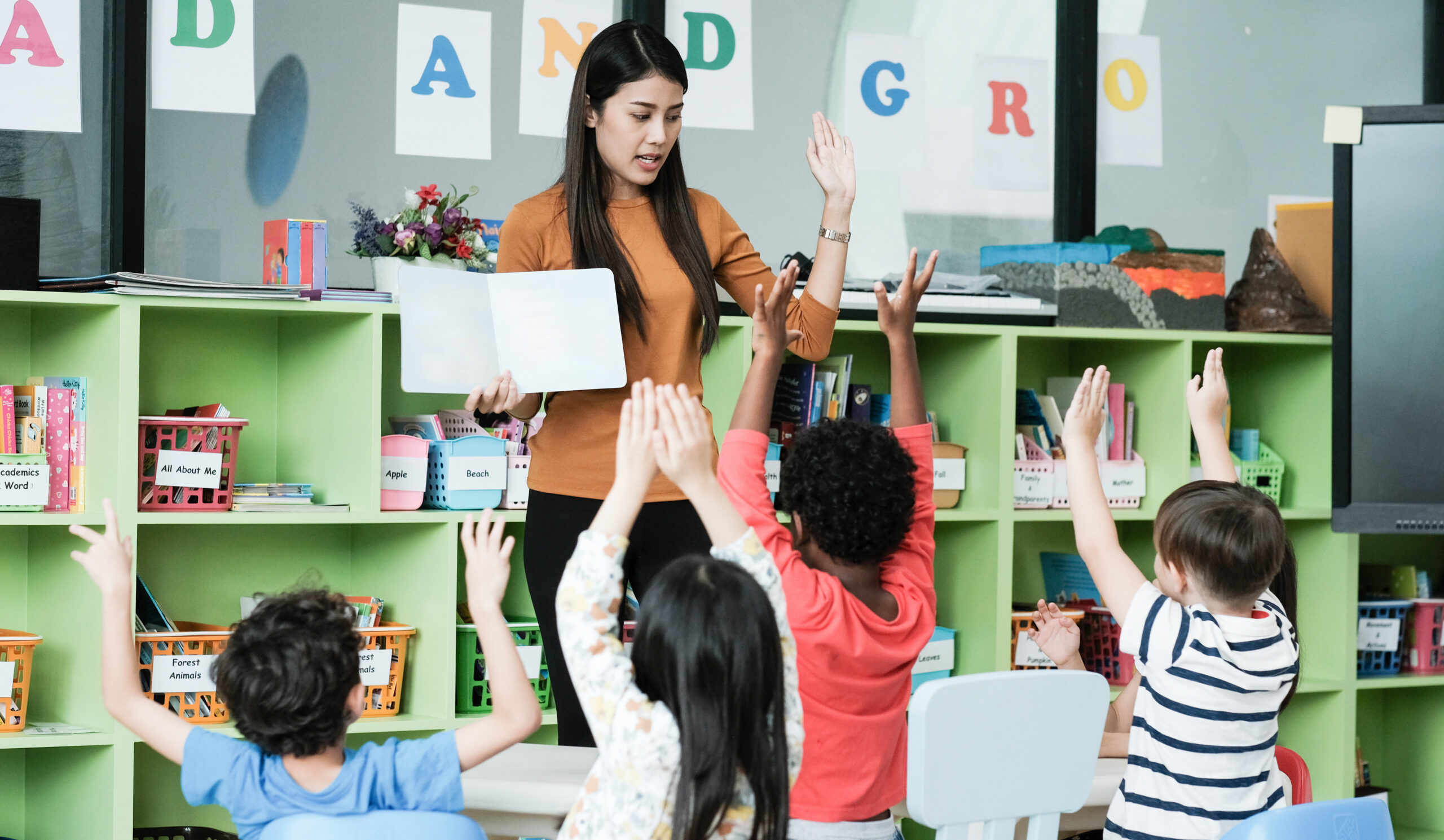When we think of assessment, we often think about tests. But good assessment is much more than tests — it’s a chance to discover what our students understand so that we can help them learn and grow.
Just like with everything else, assessment looks a little different for young students. Our squirrelliest little ones are not likely to sit down for many formal assessments, so the majority of them may be informal. Most of the time, students’ learning can be assessed without them even realizing it. But getting students engaged in the assessment process can be powerful as well.
Try these strategies for assessing your young students’ learning:
Fist-to-Five
The easiest way to check whether students understand something? Ask them! Watch how using a fist-to-five strategy can give you quick feedback on your students’ learning. This is a great strategy for young kids, as it’s simple to understand, implement, and learn from.

VIDEO: Fist to Five Feedback
Exit Slips
Exit slips are a popular strategy for older students, but there are a lot of ways to adapt them for younger students, too. In this video, third grade teacher Andrew Crandall has students write their answer to a math problem on an exit slip. He then uses the students’ exit slips to inform future lessons.

VIDEO: Assess and Plan with Exit Tickets
This strategy can be adapted for many ages and subject areas. Consider having students draw a picture of what they’ve learned or even do a verbal exit slip where they answer a quick question before moving on. After the exit slips are completed, use what you learn to plan what to teach next.
Journals
As students develop more drawing and writing skills, journals can be a great way to have students reflect on and share their thinking. Watch how one kindergarten teacher uses math journals as a way for students to record their learning. Think about how this strategy could be adapted to a variety of subject areas.

VIDEO: Math Journals: A Record for Students and Teachers
Success Criteria
As teachers, we have clear ideas of what we want students to learn. But sometimes we forget to share these expectations with our students! In this video, kindergarten teacher Marion Ivey uses success criteria to help her students progress towards learning targets.

VIDEO: Targeting Learning with Success Criteria
Peer Feedback
After Ms. Ivey’s students are clear on success criteria, she teaches them to assess each other’s learning by giving peer feedback. This is a great way to engage students in learning by getting feedback from both their teacher and their peers.

VIDEO: Growing from Peer Feedback
What are your favorite assessment strategies for young students?






